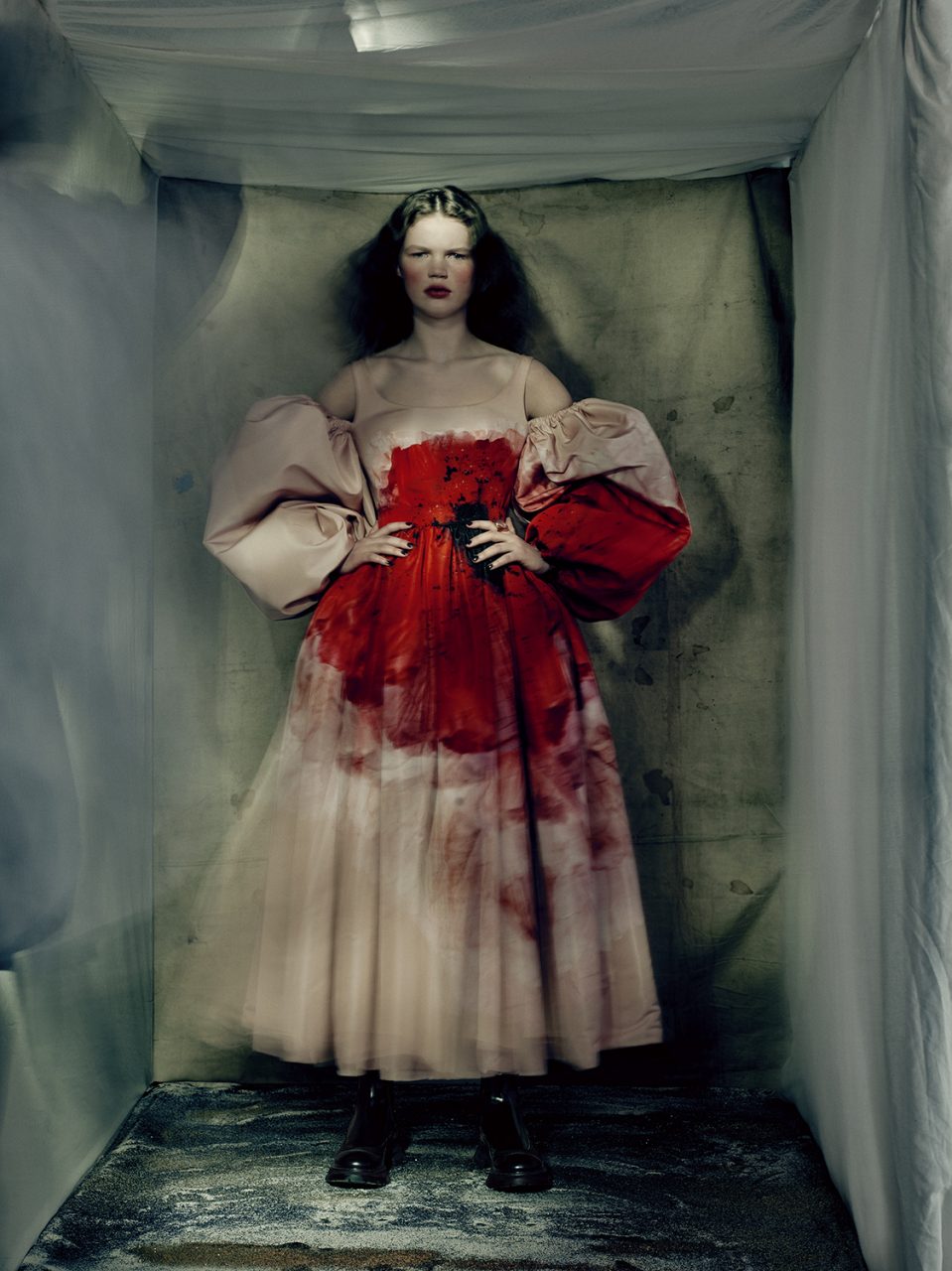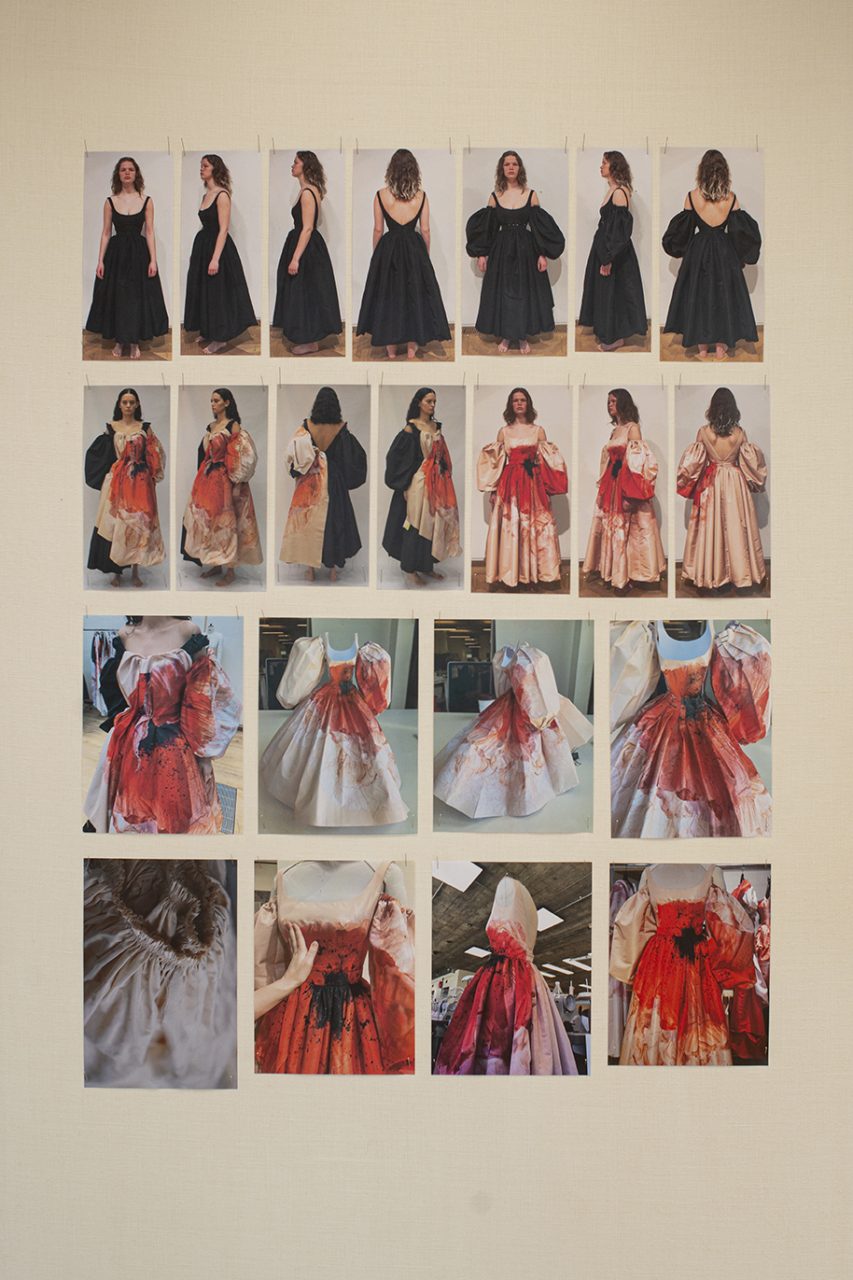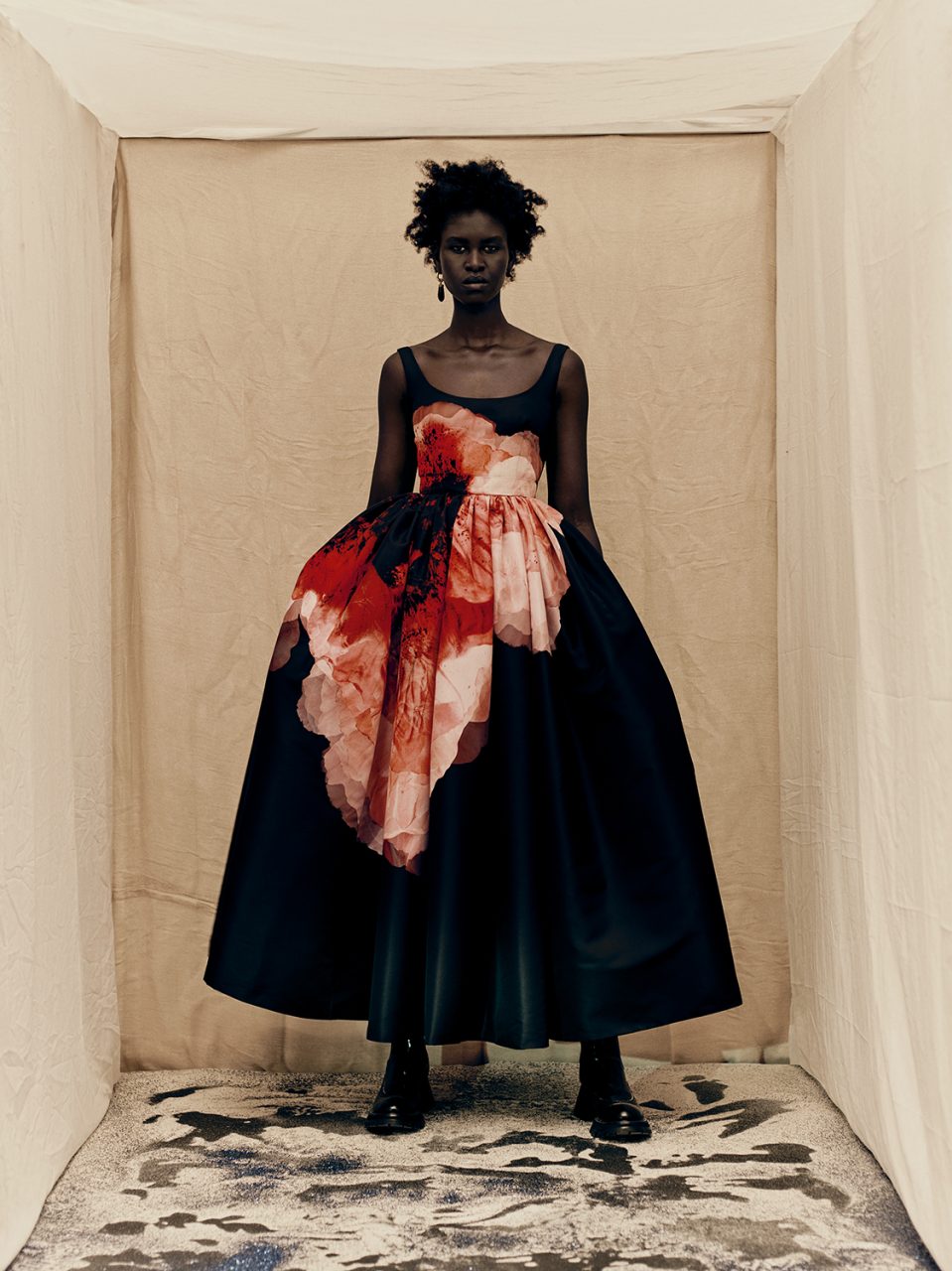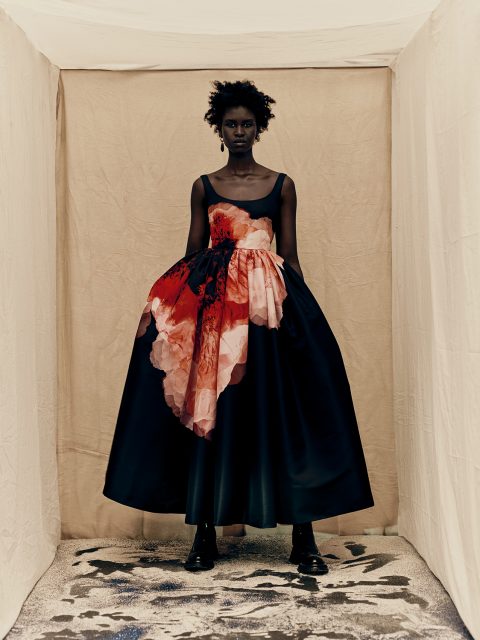At the preview of the Alexander McQueen autumn/winter 2021 collection at the house’s Old Bond Street store in London on 8 June, the Roses exhibition remained installed on its upper floors – frozen in time from when it opened in November 2019, like so many cultural events during the pandemic.
From the spring/summer 07 Sarabande show, with its gowns constructed using fresh flowers that cascaded down the designs, to the ‘Rose dress’ of autumn/winter 2019 and the laser-cut blooms that traversed the runway in spring/summer 2020, over the years flowers have been something of a touchstone for Alexander McQueen and the latest offering was no exception.
As creative director Sarah Burton wrote in the show notes, now is a time for “exploring echoes from the past to enrich our future”. This season, she looked to the healing properties of water and anemones – “the most ephemeral flowers,” which blossom for an average of three to four weeks. “The women wearing the anemone dresses almost become like flowers,” Burton adds. “But amplified, grounded, radiant and strong.”
Vogue went behind the scenes of the Alexander McQueen atelier to see the autumn/winter 2021 designs unfold.

An anemone-print flower dress with exploded sleeves in rose gold poly faille.
Photo: courtesy of Alexander McQueen
The anemone dresses embody the idea of nature and healing – creating a sense of optimism and joy emerging after a period of darkness. While the silhouette is inspired by petals, the print emanates across the dresses from the dark centre of the flower.

The fitting process for an anemone-print flower dress with its exploded sleeves in rose-gold poly faille.
Photo: Liam Leslie
Burton and her design team were interested in the idea of preserving the beauty and intensity of anemones using cloth. Just as the silhouette exploded, the bold anemone print has been scaled up to the point of abstraction. Ultimately, print and silhouette merge: the full skirts and sleeves of the flower dresses mimic the anemones’ petals.
Print placement for an anemone-print flower dress in black poly faille.
Photo: Liam Leslie
The touch of the hand in the draping of the dresses, and in the artwork and placement of the anemone prints, can be felt throughout the collection. The anemones were photographed and the images were crushed and reshot before being printed onto fabric. These couture-level prints are juxtaposed with the poly faille – an almost utilitarian fabric made from recycled yarn.
To align print and cut, Burton and her team made paper maquettes of the dresses to visualise how the prints would look on the garment. Once the placement had been perfected, they made several actual-size toiles of the design on a model – creating different versions before deciding on the final one.

Single-sleeve, anemone-print flower dress in rose-gold poly faille.
Photo: courtesy of Alexander McQueen
Read Next
“The Most Ephemeral Flowers” Inspired Alexander McQueen’s Sarah Burton For AW21
Editor
Liam FreemanCredit
Lead image: courtesy of Alexander McQueen



